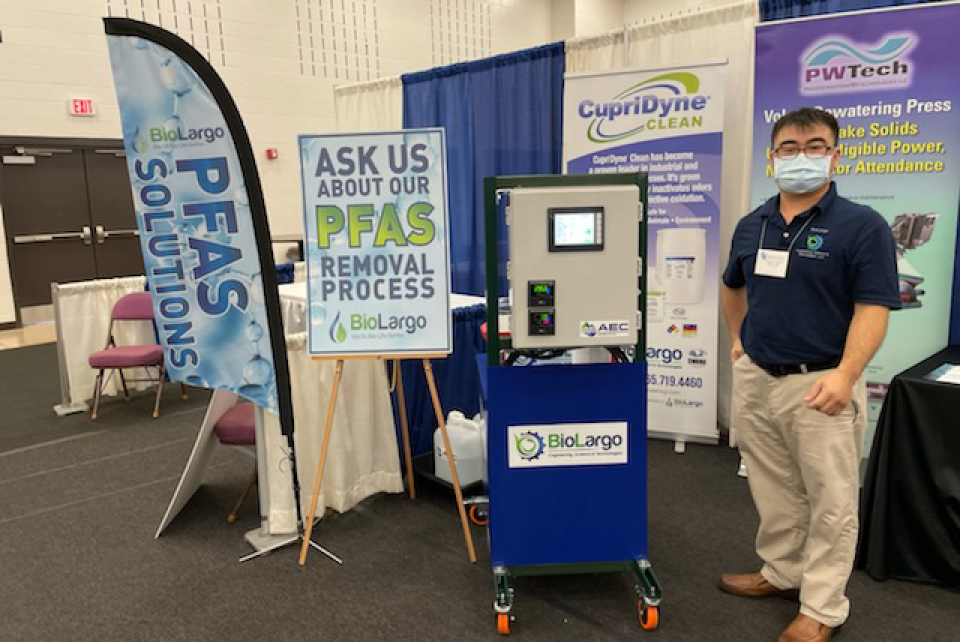BioLargo, Inc. (OTCQX:BLGO), a cleantech innovator specializing in environmental and water treatment solutions, has demonstrated that its Aqueous Electrostatic Concentrator (AEC) technology delivers significant long-term cost savings in the removal and destruction of PFAS (per- and polyfluoroalkyl substances) from drinking water, wastewater, and landfill leachate. Case studies reveal that BioLargo’s approach can reduce lifecycle costs by more than 80% compared to traditional granular activated carbon (GAC) and ion exchange systems.
PFAS, often referred to as “forever chemicals” due to their persistence in the environment, have become a major regulatory and public health concern. Federal and state regulations are increasingly stringent, with the U.S. Environmental Protection Agency (EPA) setting tough new standards and classifying certain PFAS compounds as hazardous substances under the Superfund law (CERCLA). This has placed pressure on utilities and municipalities to adopt effective and economically viable treatment technologies.
Traditional PFAS removal methods, such as GAC and ion exchange resins, require frequent replacement of filtration media, generating large volumes of PFAS-laden waste that must be transported and disposed of at high cost. These lifecycle expenses include media replacement, waste handling, transportation, and disposal fees, which are expected to rise further under pending CERCLA regulations.
BioLargo’s AEC technology disrupts this model by capturing PFAS chemicals efficiently onto a small volume of proprietary membranes, which significantly reduces the amount of contaminated waste produced. The captured PFAS is then destroyed through a separate electrochemical oxidation process, achieving total mineralization rather than simply concentrating the contaminants. This two-step capture and destruction approach eliminates the need for frequent media replacement and minimizes waste disposal costs.
The company’s case study data, derived from trials using client-supplied water, compares the 10-year lifecycle costs of the AEC system with a typical GAC-based system. The results show that the AEC’s ongoing costs for membrane replacement and PFAS destruction are substantially lower than the replacement and disposal costs associated with GAC filters. Importantly, the GAC cost analysis does not even account for transportation or disposal expenses, which would further widen the cost gap in favor of BioLargo’s solution.
In addition to cost advantages, the AEC technology avoids common operational issues seen in conventional filtration systems, such as breakthrough and channeling effects, especially with short-chain PFAS compounds. This leads to more consistent PFAS removal and reduces maintenance frequency and costs over time.
Tonya Chandler, President of BioLargo Equipment Solutions & Technologies, emphasized the economic benefits of the technology: “Waste equals cost. We built the AEC specifically to capture PFAS efficiently onto small volumes of substrate. That means lower disposal costs, more affordable and less frequent maintenance, lower regulatory liability, and better, budget-friendly economics for utilities and municipalities trying to protect public health.”
BioLargo’s system has been tested to meet the EPA’s stringent PFAS standards, achieving contaminant levels below detection thresholds (less than one part per trillion). The company recently showcased its landfill leachate treatment results at the Air & Waste Management Association’s “The Science of PFAS” conference, highlighting the technology’s ability to handle some of the most challenging PFAS-contaminated waste streams.
The pending installation of BioLargo’s first commercial PFAS treatment project, expected in early 2025, is anticipated to catalyze further adoption of the technology. The company’s leadership believes this project will demonstrate the AEC’s scalability and economic feasibility, positioning BioLargo as a competitive player in the expanding market for PFAS remediation solutions.
BioLargo, Inc. continues to develop and commercialize sustainable technologies addressing environmental challenges, including advanced water treatment, odor and VOC control, air quality improvement, energy storage, and infection control. The company leverages innovation and strategic partnerships to extend the commercial reach of its products.
With PFAS regulations tightening and public demand for safer drinking water increasing, BioLargo’s AEC technology offers a cost-effective, low-waste alternative to incumbent treatment methods, potentially transforming how utilities and industries manage these persistent contaminants.

